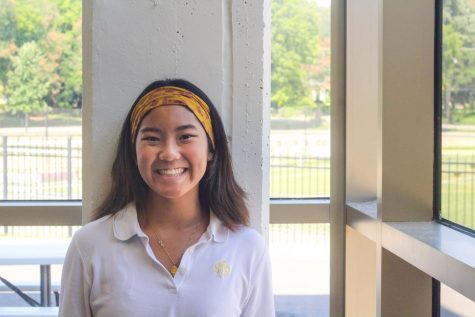Students of color are not diversity props
Schools need to stop over-representing minority students for advertising purposes.
March 29, 2019
I open my laptop. It’s about time I start researching colleges I might want to attend. I type in “University of Wisconsin-Milwaukee” because a family member recommended it. The home page of the university’s website loads, and I see a picture of seven African-American students sitting together at a sports event, along with one white student who managed to photobomb herself into the background. Curious, I Google the school’s diversity statistics to find that rather than the one of eight students shown in the photo, Caucasian students make up 71 percent of the student body.
This proud display of students of color seems to be the go-to for many schools with a high percentage of white students. As soon as I flip on the television I see companies with models of color to show how their product appeals to multiple minorities. Schools have taken a similar route in pushing out photo content filled with students of any race but white. Mail, websites, social media — you name it — are consistently abundant in ethnic diversity.
According to University of Wisconsin-Milwaukee’s Office of Equity and Diversity Services, the school “fosters an environment and culture that appreciates all members of the UWM community […] without regard to race, color, religion,” etc. What the university failed to recognize is the difference between “appreciating” all members of the community and genuinely including them. Appreciating them looks like a photo of seven black students isolated from their white classmates. Including them shows them as being part of a larger picture, perhaps all students in the stands cheering on their same sports team.
STA’s diversity and inclusion director Brianna Walker says it is important to include students of color in published material without over-representing them. “Affirmative action does not state having a certain number of [diverse photo subjects],” Walker said. “We would never include in marketing materials a picture with all students of color as that would be inaccurate and misleading.”
In a 2016 education report by The Century Foundation, I discovered it’s in a school’s best interest to have a racially diverse student body. Kids with classmates different from themselves reach outside their boxes, allowing for critical thinking and creative problem solving, eventually leading to higher graduation rates and bringing in more funding. By including models of color in promotional photos, schools appeal to a broader “minority market” and the number of prospective students of color increases, ultimately benefiting the school.
However, I still watch many schools cross the line from affirmative action to over-representation, visibly continuing to target students of color when taking promotional photos. Once the photos are published, I notice students of color get confused at seeing their fellow darker classmates everywhere in promotional photos but rarely in-person in the hallways. Though minorities are surrounded by so many faces unlike their own, schools are picking them out to be the face of their institution. Using the few students of color to mask the lack of diversity in a school makes a prop out of them.
When complaining about this issue to my friends, I’ve gotten similar responses: “Why would a largely white school put a photo of three white kids on a piece of mail in an attempt to recruit a kid of color?” or “Schools wouldn’t get any kids of color at all if they didn’t bend the Caucasian to non-white ratio.” My rebuttal is always the same: there needs to be a middle-ground between almost only displaying students of color in photos and having a percentage of students of color in photos slightly higher than the actual ratio as a move towards affirmative action.
By communicating with its students, schools can create a dialogue about how to balance a need for honest representation and the need for diversification. Schools could annually gather student focus groups with an accurate percentage of each race, then survey the groups to see if they feel correctly represented before that year’s marketing materials get published. If not, they could reshoot the photos with a proportional number of students of color that the focus group is comfortable with. That way, schools can appeal to diversity without over-representing it, not lure diversity in by portraying itself as something it’s not.
With efforts like these, I won’t have to doubt the unconvincing amount of diversity in a school website photo: I’ll be able to see the truthful numbers represented right there.





